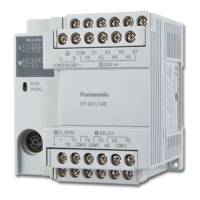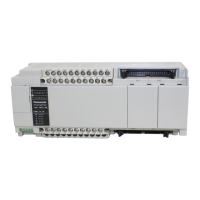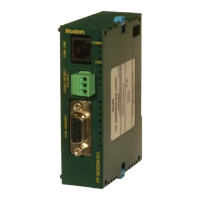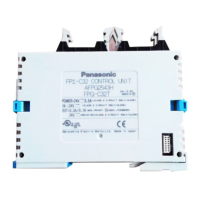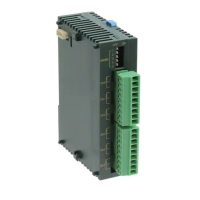
Do you have a question about the Panasonic FP-X0 L40MR and is the answer not in the manual?
| Brand | Panasonic |
|---|---|
| Model | FP-X0 L40MR |
| Category | Controller |
| Language | English |
Critical situations leading to user's death or serious injury.
Critical situations leading to user's injury or property damage.
Details compatibility of programming tools with specific units.
Details the specifications of FP-X0 control units.
Lists specifications for FP-X expansion units compatible with L40/L60 models.
Specifies restrictions for FP-X expansion units when used with L40/L60 control units.
Details software requirements and compatible cables for programming.
Identifies and describes the main parts and LEDs of the control unit.
Specifies electrical characteristics and response times for input terminals.
Details specifications for transistor (NPN) outputs.
Details specifications for relay outputs.
Terminal layout diagram for the AFPX0L14R control unit.
Details the specifications and functions of FP-X expansion units.
Identifies and describes the parts and functions of FP-X expansion units.
Specifies electrical characteristics for expansion unit inputs.
Details specifications for relay outputs of expansion units.
Details specifications for transistor (NPN) outputs of expansion units.
Details specifications for transistor (PNP) outputs of expansion units.
Explains how I/O numbers are allocated for control and expansion units.
Details the I/O number ranges for control and expansion units.
Explains how I/O numbers are allocated for FP0/FP0R expansion units.
Provides guidelines for installing the units.
Specifies environmental requirements and installation space considerations.
Step-by-step guide for connecting FP-X expansion units using expansion cables.
Specifies requirements for AC power supply wiring and isolation.
Details wiring procedures for various types of input devices.
Details wiring procedures for output circuits, including protective measures.
Instructions for connecting the COM port (RS485) between units.
Precautions regarding system design, interlock circuits, and grounding.
Overview of available communication functions and types.
Lists communication modes and their corresponding ports and models.
Lists communication specifications for the tool port, including interface and modes.
Describes parameter settings for both tool and COM ports.
Provides an overview of serial communication capabilities.
Provides an overview of high-speed counter, pulse output, and PWM output functions.
Introduces the three pulse input/output functions available in FP-X0.
Details the specifications for high-speed counter and pulse output functions.
Provides an overview of the high-speed counter function.
Provides an overview of the pulse output function and its controls.
Explains different pulse output methods and operation modes.
Details the password protection function for programs and system registers.
Explains the purpose and methods of setting passwords.
Step-by-step guide for setting passwords using the programming tool.
Explains the purpose and effects of upload protection.
Guide on setting upload protection using the programming tool.
Explains the two main functions of the FP memory loader.
Details the clock/calendar function for L40 and L60 types.
Explains the clock/calendar function and its requirements.
Provides instructions for setting the clock and calendar.
Provides an overview of the sampling trace function.
Provides detailed information about the sampling trace function.
Details the self-diagnostic function for checking system status.
Explains how to interpret the status indicator LEDs on the control unit.
Describes how operation modes are affected when errors occur.
Troubleshooting steps when the ERROR LED is flashing.
Checks when output indicator LEDs are ON.
Checks when output indicator LEDs are OFF.
Checks when input indicator LEDs are OFF.
Checks when input indicator LEDs are ON.
Overview of operation errors and their indicators.
How operation modes behave during operation errors.
Explains what duplicated output is and its implications.
Explains what duplicated output is and its implications.
Lists instructions that utilize leading edge detection.
Identifies programming practices that lead to incorrect execution.
Details the operation of rewriting programs during RUN mode.
Details processing when forced input/output is initiated during RUN.
Provides a comprehensive table of general specifications for the units.
Lists general specifications like ambient temperature, humidity, and weight.
Communication specifications for the tool port (RS232C).
Communication specifications for the COM port (RS485) on L40MR/L60MR models.
Provides dimensional drawings and installation clearances.
Shows overall dimensions of the control unit.
Specifies dimensions required for installation mounting.
Specifications for PC connection cables.
Specifications for cables used to extend the tool port.
Lists and describes system registers, internal relays, and special data registers.
Details the purpose and types of system registers.
Procedures for confirming errors when the ERROR indicator is ON.
